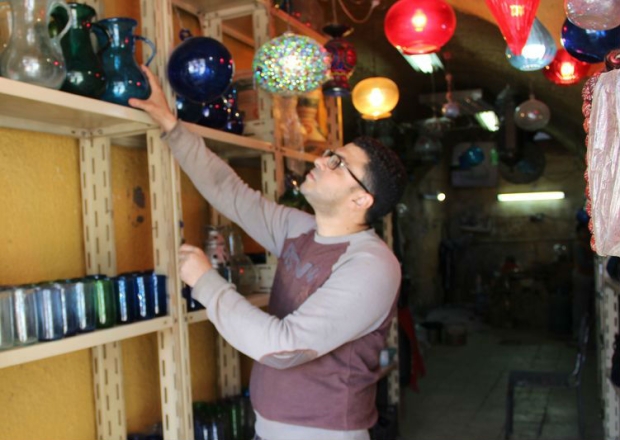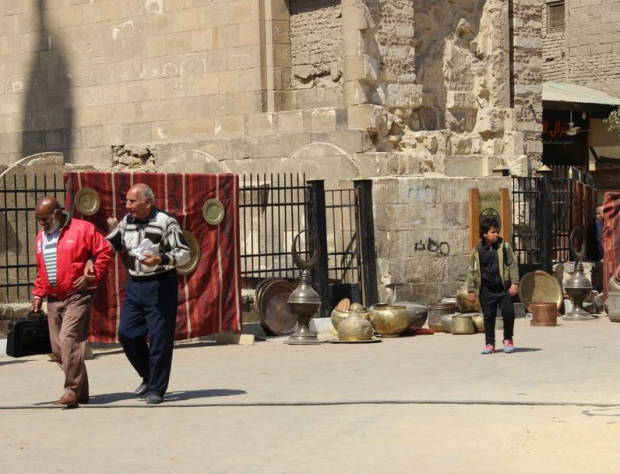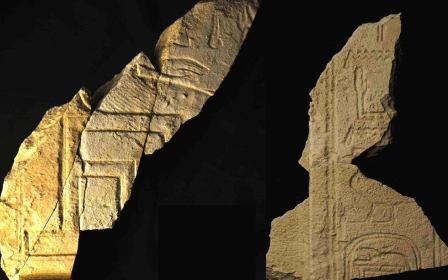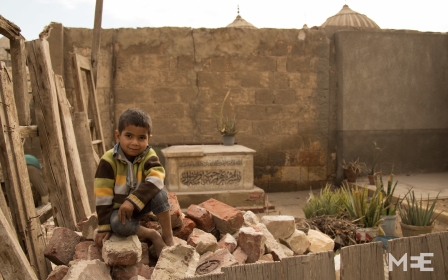The art bringing Cairo's City of the Dead back to life
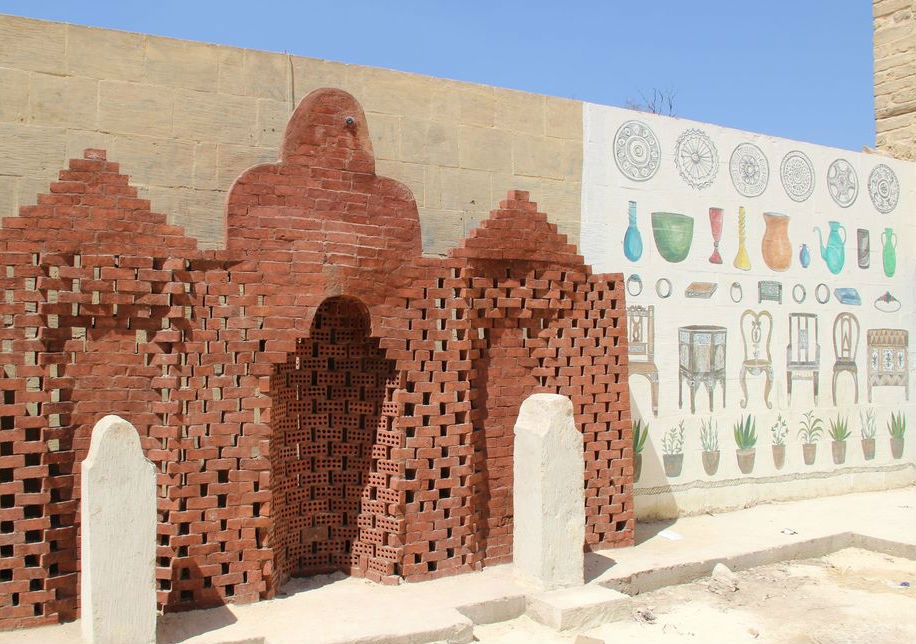
CAIRO - As you near Salah Salem street, in the southeast of Cairo, a walled expanse of graves stretches into the distance for several miles, below the hills of Mokattam. Within the cemetery, hundreds of thousands of Egyptians live and work, just as in any other quarter of the city.
Driving into the Qaytbay area, what at first seems like just another side road suddenly takes you straight into the City of the Dead. Within a few minutes, the Qaytbay Mosque pops up on your left hand side and an adjacent central square marks the heart of this historic neighbourhood.
As stray cats run around the dusty streets, artisans stand outside their workshops, and the unexpected quietness offers a sudden change of pace from much of the rest of the chaotic Egyptian capital.
The neighbourhood has the vibe of a village rather than an urban setting.
“I’m very happy Agnieszka and her team came here,” says local craftsmen Khaled Abdel Hamid enthusiastically. “Thanks to them many people have come here to see our handicrafts. They have revived this place.”
Abdel Hamid, who has been practising carpentry since he was 10 years old, is speaking of Agnieszka Dobrowolska, the Polish founder of Cairo-based ARCHiNOS Architecture association.
The architecture and social collective is currently implementing a project called "Outside In: The Art of Inclusion, A Place for Arts and Culture in Cairo's City of the Dead,” originally launched in 2015.
Funded by the European Union, it started life as a conservation project for Mamluk Sultan al-Ashraf Qaytbay’s 15th-century funerary complex within the City of the Dead, which includes a mosque, a school and the remains of a drinking trough.
Art comes to people
With extensive experience in conservation of architectural heritage in the Middle East, ARCHiNOS renovated several monuments in the City of the Dead over the past several years.
Among the most treasured landmarks of historic Cairo, Sultan Qaytbay’s reception hall was recently adapted for use as an artistic and cultural hub in the neighbourhood. The architectural practice has also organised cultural events in and around the iconic complex.
“Outside In” has thus expanded to make culture and art more accessible to this marginalised part of the city, not often exposed to such projects.
“The idea behind it is to bring in art by engaging the local community,” explains Dobrowolska, who has been working in Egypt for over 20 years and developing daily contact with the City of the Dead’s residents.
“Art comes to people,” she says, citing the project’s motto.
Before the architect and her co-workers came to the Qaytbay area, Abdel Hamid was looking to find a new career, at a time when traditional handicrafts were disappearing. But now, through the project, he has contributed to the renovation of the Sultan Qaytbay’s hall and participated in 10 exhibitions.
As part of “Outside In,” fairs are held within the Qaytbay quarter every two to three months with the aim of promoting local crafts, and attracting people from outside to buy directly from the artisans themselves.
Aside from local talent, ARCHiNOS has also invited artists from around the world to engage the community and work in the Qaytbay area, inspired by the local culture.
In a courtyard beside the Mamluk complex, graffiti on the wall of a house shows a brown-coloured mouse, with big round ears and green eyes, putting a leash on a Pharaonic cat. The mural is the work of two Polish artists who painted in the area over 10 days last December.
One of them uses the pseudonym Franek Mysza, the name of the mouse he has been painting for 12 years, with the aim of hopefully giving a smile to passers-by. The cat, a revered animal in ancient Egypt, is still loved by Egyptians today.
'People have seen my products on display, they now know my work. I’m on the map'
- Khaled Abdel Hamid, carpenter
In January, British visiting artist Lindsay Sekulowicz came for three weeks. In collaboration with local artisans, she produced The Passengers, a set of sculptural works employing various indigenous materials - gold leaf, clay, glass, gypsum, raw pigments, mother of pearl and limestone – to trace the history of trade and cultural exchanges in Egypt.
“Working with different materials alongside the craftsmen, I wanted to create something in response to the neighbourhood, culturally relevant,” she notes.
Local material
Inspired by historical artefacts and techniques, Sekulowicz’s sculptures offers a reflection on contemporary journeys across the Mediterranean.
The artist also conducted a craft workshop for neighbourhood children, during which she asked them to create clay objects they would like to take on a long journey. Their snakes, crocodiles and cats were displayed alongside her own work at the opening on 1 February.
Kids and residents of the neighbourhood have been involved in the project in an interactive, fun way through numerous creative activities like murals, mosaics, sculptures and workshops.
On 31 March, ARCHiNOS hosted a live performance organised by D-CAF festival at the Sultan Qaytbay complex that brought artists from Ireland and Egypt, including disabled dancers.
Despite being the resting place of the city's deceased, the City of the Dead is a vibrant place where people and workers are going about their daily routines in this very special location, with its tombs, mausoleums and beautiful Mamluk monuments.
“It’s a unique place, very much alive, though people live in an unstressed, peaceful way,” Dobrowolska comments. “It’s also neglected, and in this way it needs exposure so visitors can discover this area and appreciate its heritage.”
“Visually, the City of the Dead is so beautiful and surreal. I think it’s the case of elevating the status of the neighbourhood, making people see the potential of its space and the ability of the local craftsmen,” says Sekulowicz.
Around one o’clock, the little square next to Qaytbay Mosque gets busy, with school pupils grouping, kids playing and craftspeople working with glass, metal and wood.
“The handmade glass business is dying. We need to promote this industry and do more advertising to attract a higher turnout of people to the area,” says Kamel Hodhod, a glass worker who collaborated with ARCHiNOS in renovating some nearby historical sites.
The traditional craftsmen hope "Outside In” can bring more attention to their neighbourhood and help pull in more tourists in the future.
Walking away from the Qaytbay Mosque, a film crew appears near the square preparing the setting for a TV series on historic monuments in Cairo, as a small group of women clad in black can be seen sitting on a street pavement, mourning.
New MEE newsletter: Jerusalem Dispatch
Sign up to get the latest insights and analysis on Israel-Palestine, alongside Turkey Unpacked and other MEE newsletters
Middle East Eye delivers independent and unrivalled coverage and analysis of the Middle East, North Africa and beyond. To learn more about republishing this content and the associated fees, please fill out this form. More about MEE can be found here.


